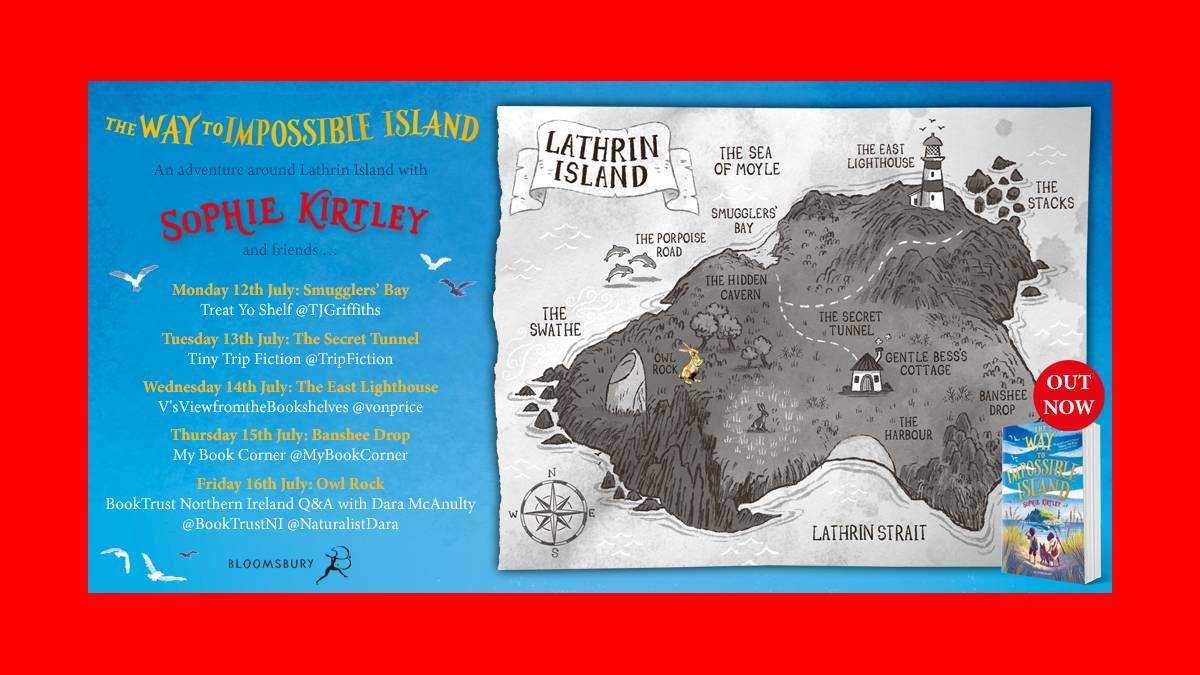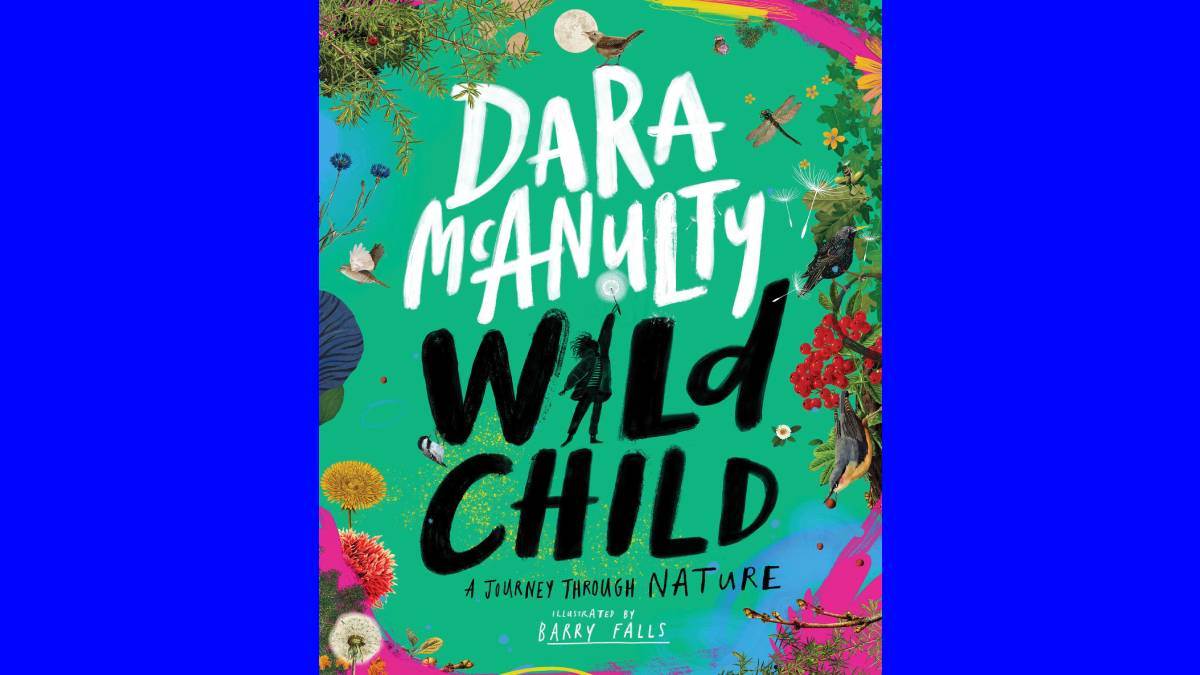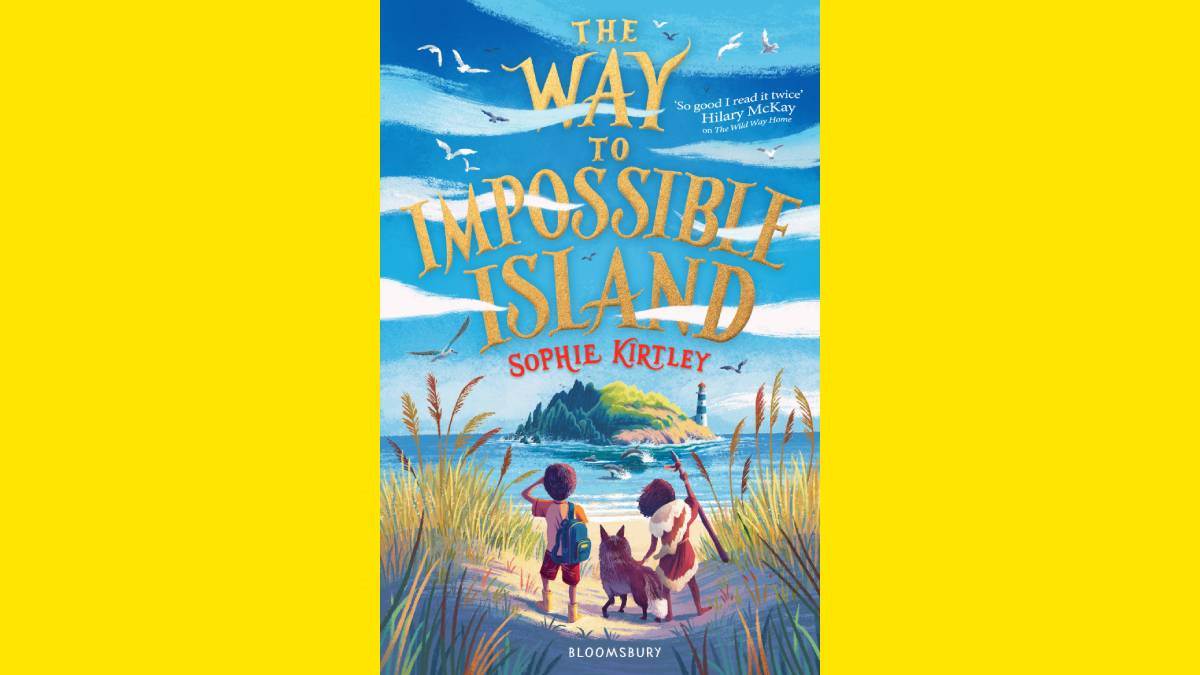BookTrust: Q & A with Dara McAnulty
Published on: 15 Gorffennaf 2021 Author: Sophie Kirkley
As part of her Northern Ireland Stories Tour Sophie Kirtley, author of The Way to Impossible Island, interviews Dara McAnulty, author of Wild Child .

One thing I wished when I first read Diary of a Young Naturalist, last summer, was that I could share Dara McAnulty's incredible book with my nature-loving daughter; so much of what Dara describes in his book would have made her heart sing, but sadly she was simply too young for it. This is one of the many reasons that I was so delighted to learn that Dara was writing a book for children, a book which would capture and nourish their wonder and appreciation of the natural world. And here it is: Wild Child written by Dara McAnulty and illustrated by Barry Falls is everything my daughter and I could have hoped for...and more – bold, beautiful, empowering and bursting at the seams with wild magic.
Wild Child was published by Macmillan Children's Books on July 8th, the very same day as my own second book The Way to Impossible Island was published by Bloomsbury. I couldn't think of a lovelier more genuine person to share a book birthday with than Dara McAnulty and I'm utterly thrilled to chat with him today about all things wild, bookish and Northern Irish.
Hello, Dara! Congratulations on the publication of Wild Child! It really is such a powerful, exciting and beautiful book, one that will have a huge impact on all the children who read it, and on their adults too! When I'm writing for children, I'm always so conscious of that strange juggle between wanting to convey a message that matters but at the same time to entertain and give kids a fun experience.
In The Way to Impossible Island I wanted to have a wild rip-roaring adventure going on, but at the same time, beneath the surface to explore the characters' quieter internal changes and developments. How did you manage putting across such an important environmental message and at the same time engaging your child readers so brilliantly?
Hello Sophie, thank you so much and congratulations on the publication of 'The Way To Impossible Island'! I absolutely loved it. I think that's hard for me to answer because I find it difficult to say for sure whether I got the balance just right. That's almost for the reader to decide? I have always said though that I come from a place of joy, it's very hard to funnel out the fear of the challenges our world is facing but, ultimately, I just relayed the message I have always felt is more attune to my sensibilities as someone who feels deep wonder at the complexity and beauty of the natural world. I chronicled my own journey as a young naturalist in a way that young people could perhaps connect with and in all honesty, I wasn't thinking of an 'environmental message' but I'm so delighted that resonated with you! I was just trying to convey the joy and fascination I felt as I was discovering the workings of the living world, passing knowledge on – child to child – in a sense, is a very natural thing to do.
At my school, I run a group called 'Roots and Shoots'. I guide my peers on nature walks and point out interesting things. They are always asking me questions, so thirsty for knowledge and information. I know that innately kids feel like this in the right environment, so when writing Wild Child, I really tried to thread together as many elements of the natural world as possible without being overwhelming. An exciting nature walk on the page seemed the most natural way to do this.
I have a confession to make: in The Way to Impossible Island my main character is called Dara! I wish I could say that it was in homage to you, but actually Dara was a name I've always loved since I was a girl, so it's just a lucky and a lovely coincidence. My Dara in my book, does share some common ground with you though I think, mainly in some of his attitudes to life. Dara and his Stone Age friend Mothgirl both learn to defy limiting expectations of themselves which are imposed upon them by others.
I read with real eye-wide-open-shock that you were once told by a teacher that you'd never be a good writer. The wrongness of that made me really angry; both because it's just so clearly untrue (your writing is beautiful) but also it's such a toxic thing for a teacher to say. I was also so saddened to read about how cruelly you were treated by other kids when you were younger, and by negative wrong-thinking attitudes towards your autism. Looking back now, how do you think you managed to defy others' negativity and turn such nastiness on its head?
When I fail to understand emotions, I reach for logic. I think after a while I began to stop caring about what other people said for one simple reason. Nobody can know everything about anybody. Therefore, you cannot just say what they can and cannot be as you are just creating these invisible boundaries with no real evidence to back it up. This was a massive revelation to me as it caused me to realise that these supposed towering blockades against the things that I loved doing were simply an opinion, and opinions change when you prove them otherwise which is what writing books like Diary of a Young Naturalist and Wild Child did for me.
I also moved schools quite a bit and when I finally arrived at schools that were nurturing and accepting of my differences (thank you Erne and Shimna Integrated College!) I began to feel emboldened to do what felt right. Having a very supportive family helped too, as did the nature community on Twitter who gave me incredible feedback when I started writing my blog 'Young Fermanagh Naturalist' at age 12. I joined Twitter in 2016, back then my mum helped me run my account to publish my blog posts. I quickly found a supportive community and really, nothing would have happened so quickly if it weren't for that early online encouragement.

One of the things that affected me deeply when I read Diary of a Young Naturalist was the familiarity of the landscapes you describe in it – these are places I know in my own bones, as, like you, I'm from Northern Ireland, and these places are part of who I am too. Both The Wild Way Home and The Way to Impossible Island are set in wild Irish landscapes, the forests and coasts that I love the best and that I have always known. In Wild Child I can definitely still feel that pulse of home beating strongly – did you consciously set out to draw on your roots in this book as well... or did it just kind of happen?
Roots are what tether us to the earth in a nurturing way, and so absolutely, yes. Wild Child is completely held by deep, watered roots. It wasn't conscious though, it felt very innate to tell the story of an 'actual' Wild Child (me) and the journey I took as a young child, guided by may parents. Certain landscapes inspired the habitats sections such as Big Dog Forest in Co Fermanagh for the Upland section and Rostrevor Wood and Florencecourt pond for the river section. My own house and garden are represented in the first two sections, 'Through The Window' and 'The Garden'.
Each element of Wild Child represents the experiences I had as a child exploring the world outside and the thirst for knowledge that followed. The prose from the book just poured out and I could see, with hindsight, that my roots were there for everyone to see. I hope it gives a genuine feeling of being connected to the natural world, as we all are.
In my book The Way to Impossible Island, Dara sets off on an adventure to Lathrin Island to see the elusive Golden Hare. This is based of course on the real island of Rathlin Island, a place I love and one that I know is so close to your heart. I remember seeing a video that you posted from when you actually saw a golden hare there with your own two eyes; I have never seen a one, so I've got goose pimples even now just thinking about it! Can you tell me about that experience? Was it as magical as I think it would be?!
Rathlin is one of most favourite places, it is unruly and wild. A place of true freedom that just begs to be explored in a 'free range' kind of way. My brother and I would just leave the cottage and stay out for hours just 'mooching' about, finding skulls, feathers, watching birds. One morning we were out walking and came across two 'Bonxies' or Great Skuas. They were obviously guarding young, we unwittingly just happened upon them and were quite rightly, dive bombed! We could tell they were acting in a way that was stressful to them, so we ran low to the ground. It was intense! We hunkered down in the grass, breathless, and saw that they had flown back to their possible nest site. Then, out of the reeds, bounds a golden hare with the bluest of eyes!
Heart hammering, we managed to pull out my phone and take a very shaky film. The film is only a fraction of the moment we shared with this almost mythical being. It was a pure heart-stopping and magical moment. We ran home as fast as we could to tell everyone. I remember posting it to Twitter and they went wild for it! Clearly it was a moment that brought magic to a lot of people.

Wildness is a theme that is clearly at the heart of your books, and at the heart of mine too. I love reading books that make me think about the wild world anew and from new angles. Robert Macfarlane and Jackie Morris's books, The Lost Words and The Lost Spells, definitely made me look close up anew at each plant or animal they evoked. Are there any 'wild-themed' books that you would recommend for young readers?
I would definitely recommend, The Lost Words and The Lost Spells too, and of course The Way To Impossible Island, which completely transported me back to Rathlin Island! I would also recommend Twitch by M.G. Leonard and By Ash, Oak and Thorn by Melissa Harrison, two great books, just released. I also love The Animals of Farthing Wood, a classic, and When The World Turns Wild by Nicola Penfold. Wolf Wilder by Katherine Rundell. Anything by Abi Elphinstone! It's so hard to choose!
Never has there been a more essential moment to unlock conversations with children about the natural world and their role within it. And books, like yours, are the key to sparking these important conversations and opening up the possibilities of change. Thank you so much, Dara, for sharing your thoughts and insights with me and with Booktrust NI.
The Way to Impossible Island is published by Bloomsbury Children's Books.
Wild Child by Dara McAnulty, illustrated by Barry Falls is published by Macmillan Children's Books.





